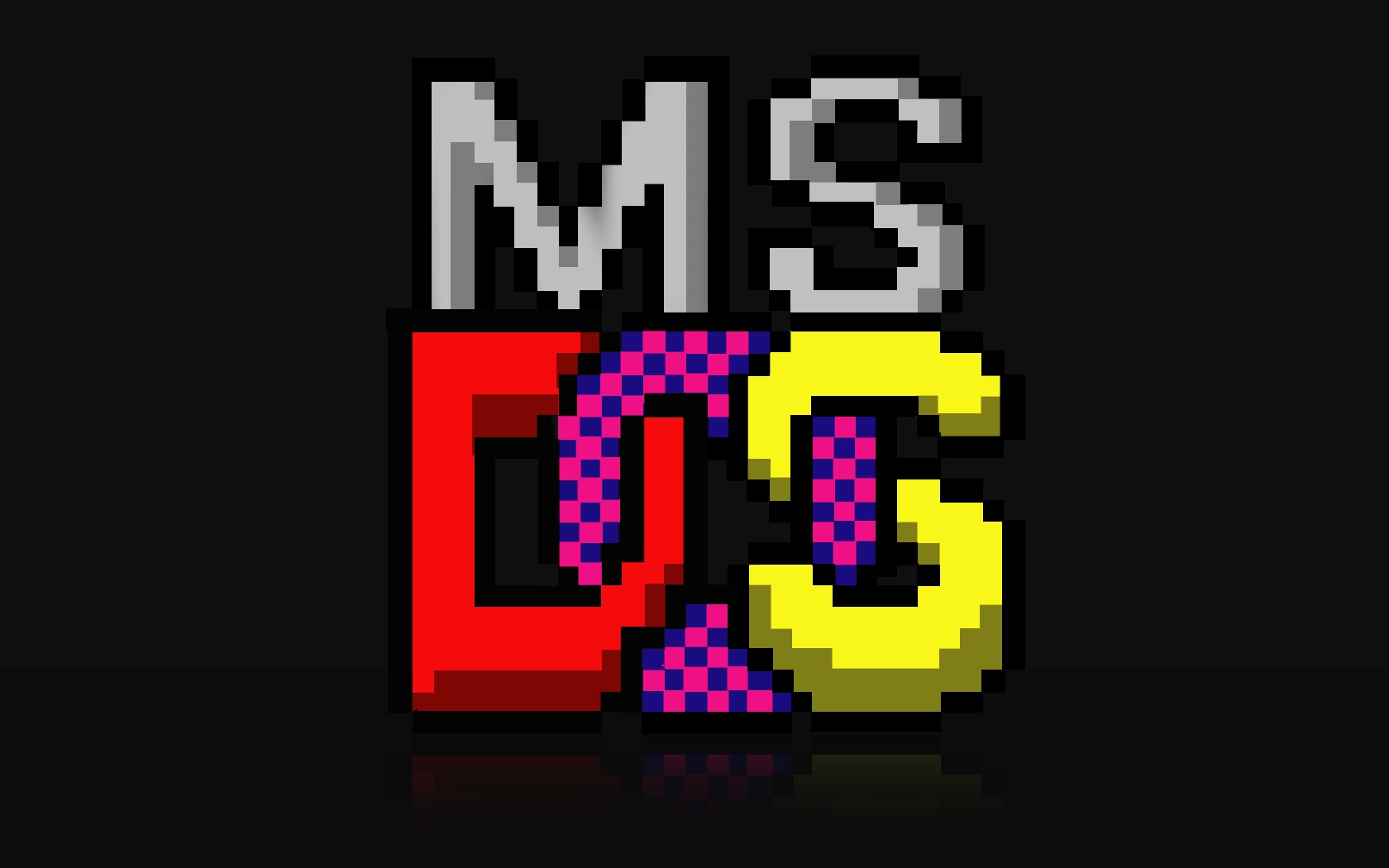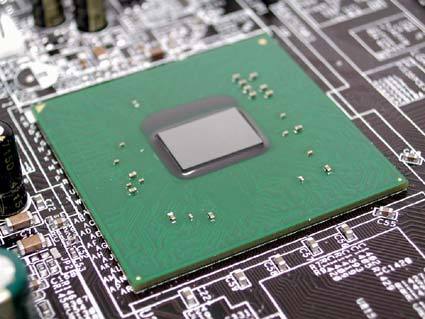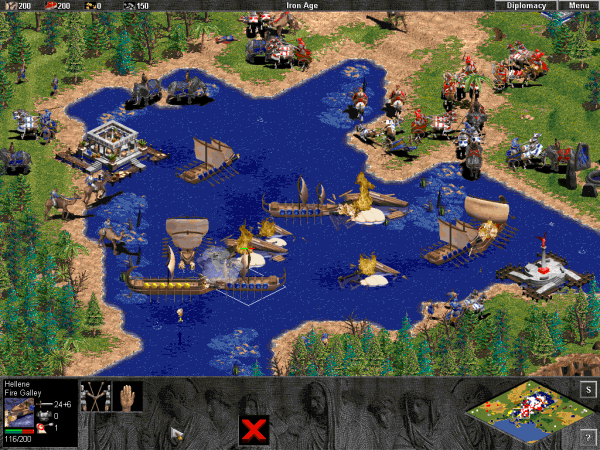The Quest For Retro Gaming: Building A Vintage PC (Part 1)
As hardware and software technologies advance over time, compatibility with older hardware and software technologies is lost. Although this isn't much of a problem for many people -- how often do you see someone using a program designed for Windows 98 on Windows 7 -- but for gamers with a fondness for older titles, this can be a major problem.
Video games tend to be among the most difficult programs to transition from one version of Windows to another, and the problem only gets worse as time goes on. Today there are emulator programs that allow you to play most (if not all) of these old games, but only by building a PC specialized for these games can you get the full experience.
Currently, there are four different eras of gaming that are largely defined by the OS used: the DOS era, the Windows 95/98 era, the Windows XP era, and the modern era. Although a well-appointed modern desktop PC can play current titles without issue, playing games from those earlier eras can be difficult, as several of the older games simply do not work on newer versions of Windows.
Even if the games do work, the overall experience is not always the same. As a result, if you want to play these old titles, your best option might be to build a retro gaming PC with vintage components that were optimized for them.
Why Build An Old PC For Gaming?
Although existing emulation programs such as DOSBox and ScummVM let you play many games designed for DOS and Windows 95/98, the overall experience isn't the same. It's similar to how some gamers keep an NES and SNES tucked away in the closet and bring them out on occasion; even though they can play several of the titles on the Wii or Wii U today, the experience playing on the original system is different, and special.
One of the most notable differences between playing DOS games on an emulator and on an old PC is the audio experience. Although the audio is simulated by emulators, something about hearing it played over a square-wave generator on a motherboard changes the whole experience.
For Windows 95/98, the games became a little more complex, and emulation either doesn't exist or is a buggy experience.
Get Tom's Hardware's best news and in-depth reviews, straight to your inbox.
Windows XP games typically have better forward compatibility with Windows Vista and Windows 7, but there are still a few titles that lack compatibility with newer versions of Windows. Because more of the games work on newer systems, however, retro gaming systems built for Windows XP are less common.
Further, although most systems originally designed to run Windows 98 or older were tossed out years ago, there are many older computers that still run Windows XP today. As a result, our focus will be on building DOS- and Windows 95/98-era retro gaming systems.
We also shouldn't forget that building a PC is a lot of fun! Some PC enthusiasts enjoy building computers more than using them even, so you might build one of these systems for the sheer joy of it. Further, building a new computer can be quite expensive, but the cost of building an old system like this could cost nothing at all (depending on how many spare parts you can dig up), or at most no more than $100.
Choosing The Right CPU
The real first step to building one of these systems is to determine what kind of games you want to play and then picking optimal parts to play them. I mentioned that we will focus on the DOS and Windows 95/98 gaming eras, and I will specifically focus on the games that filled my childhood, such as the Monkey Island Series, Kings Quest V,The 7th Guest, Doom, Quake, Diablo, Age Of Empires II, Warcraft II, Command And Conquer, and Descent: Freespace.
Although I chose parts from around 1998 when many of these games were relatively new, thinking like a modern PC enthusiast, I opted for components that were faster than I ultimately needed. I wanted to make the system as fast as possible using the technology from this time period, but that was a mistake.
Some video games become harder as the computer gets faster. This can occur in a variety of situations, from AIs that react far too fast to beat, to characters overreacting to input and running at lightning speed. Because hardware at the time was relatively slow and constrained, game designers didn't set limitations on how fast the game could run, and as a result, as the computer you use gets faster, the game gets harder.
To avoid this issue, you need to be sure your CPU is not too powerful for the system you build. If the games you play on this system are mostly from 1998 or later, getting a 1 GHz or faster Athlon or Pentium III processor is the best choice. From there, drop 200 MHz each time you go back one year.
For example, Warcraft II came out in 1995 and requires at least a 60 MHz Pentium processor. Warcraft II is one of those titles that suffers from having a CPU that performs too fast. Using my 1 GHz Pentium III processor, parts of the game ran way too fast and the game became unplayable.
I purchased a 450 MHz Katmai Pentium III processor in order to resolve this problem, and the game runs perfectly with that CPU installed. The key here is balance. The minimum needed speed (60 MHz) is playable but performs too slowly, whereas a newer 1 GHz processor is way too fast. Somewhere in between is where you'll find the optimal gaming experience.
For games older than 1994, a processor clocked at around 200 MHz should be ideal.
3dfx, Nvidia or ATI?
Selecting a GPU can be a little tricky, as there are numerous 2D and 3D graphics adapters that you can pick from. Most gaming computers in the 1990s had one of each, but it's easier for us to cheat a little and save costs in our system by using a GPU capable of both 2D and 3D graphics. It is also best to get an AGP card for better performance.
Fortunately, by 1998 the three biggest GPU manufacturers (3dfx, Nvidia and ATI) produced GPUs capable of both 2D and 3D graphics. At the time, 3dfx' Voodoo3 was the highest-performing card on the market, but it lacked support for 24-bit color. This is the card I chose for my retro gaming PC build, but it unfortunately makes Monkey Island 4 look terrible.
If you plan to play games in 16-bit color, then the Voodoo3 is a clear winner, but if you need 24-bit color, a better option would be Nvidia's Riva TNT or Riva TNT2. The Riva TNT2 offers better performance all around, and really it might be the best choice, but part of the fun of building this system is to have limitations.
These parts were designed over 15 years ago, so there is always something better that you'll end up choosing. Although 3dfx no longer exists, it was the strongest force in the GPU market around that time, and enthusiasts remember the legacy of the Voodoo GPUs fondly.
I wouldn't recommend ATI cards here. Many rumors persist to this day that ATI/AMD have poor drivers that cause numerous problems. Today, the drivers from AMD aren't a problem, but it's true that around 1998 ATI had relatively poor drivers compared to Nvidia and 3dfx, and the last thing you want with a system this old is driver problems.
The Remaining Parts
Once you have the CPU and GPU picked, the rest of the parts are relatively easy to choose. For the most part, AMD motherboards of this time period didn't have any widescale problems outside of USB issues. Because USB devices were not heavily used in the 1990s, this isn't a major issue.
If you opt for an Intel motherboard, be sure that it has an Intel 810 or 815 chipset. Intel had several chipsets for socket 270, but the Intel 820 and 840 chipsets used a new type of RAM at that time called Rambus RAM.
Rambus RAM was supposed to be a higher-performance alternative to SDRAM, but its performance at times dropped below SDRAM and cost more. Because it was only used for a short time, it is less common and it will still cost more than SDRAM today. My overall recommendation for Intel motherboards is to ensure that the board uses SDRAM and not Rambus RAM.
I highly recommend avoiding Dell motherboards, too. This isn't because of potential defects, but because Dell often used a proprietary 6-pin CPU power connector. Although a similar 6-pin CPU power connector is used on some motherboards that is physically identical, the pin configuration is different on Dell's motherboards.
As a result, you need a special power supply for the Dell motherboards, and if you try to use a power supply with the other 6-pin power connector, you'll fry the motherboard (and possibly the CPU), so it's best to just avoid Dell motherboards from the beginning.
A 10 GB HDD would be sufficient if you keep most of your data on disks, but burning images of the disk and then playing them off of the hard drive significantly helps load times. For storing game files on the system, it's best to use a 40 GB HDD.
Although games are installed on the C: drive, if you have a second HDD you can speed up load times. This helps to reduce slowdown caused by HDD seek time when fetching new data.
For the rest of the build, I recommend an optical drive, 512 MB of RAM, and a Sound Blaster-compatible sound card. (Most sound cards from the mid to late 1990s were).
Ready To Game?
Once you have all this hardware, the only thing left is the software. Install the version of Windows or DOS that you want to use, put some titles on the computer, and get ready to game like it's 1990.
Feeling nostalgic? Stay tuned for part two, when we actually build our retro gaming PC and see what it's like to use this gaming machine. Will it be as good as we remember? Was it worth all the time gathering the parts and putting it together? There's only one way to find out.
Follow Michael Justin Allen Sexton @LordLao74. Follow us @tomshardware, on Facebook and on Google+.
-
Alec Mowat "Warcraft II is one of those titles that suffers from having a CPU that performs too fast. Monkey Island Series, Kings Quest V,The 7th Guest, Doom, Quake, Diablo, Age Of Empires II, Warcraft II, Command And Conquer, and Descent: Freespace."Reply
All of these games will work in DOSBOX, are on GoG or are on Steam already.
Age of Empires and Warcraft II will install on Windows 8 no problem. Quake probably will to, and I wouldn't be shocked if Monkey Island and Kings Quest install fine. I have Diable, The Sim 1 and Black & White installed on this Windows 8.1 box right now.
Freespace has an HD remake on Steam. WarCraft II Battle.net edition should also work fine on any modern PC and includes a number of fixes you'll probably won't want to miss.
Now that DOSBOX supports Glide emulation, you can get a lot running in there properly and looking fine, including Tomb Raider (also on Steam).
Any game that works on XP will work on Windows 8.1, with a little tweaking. I'd had people give me lists of games they could only run in XP and I had them all working fine. You might need to shim them a bit (compatibility mode, etc.), but they will go.
There are only two kinds of games I couldn't get working in Windows 8.1, that you will get working in 98SE/ME.
1. DOS games that won't work in DOS BOX for x reason
2. Windows games that are 16 bit won't emulate on 64bit Operating Systems (but will run in 32 bit).
Just my recommendations:
I recommend the biggest HD you can get. The ISO files take up a lot of disk space rather quickly. If you can find an old PCI IDE RAID card, you can RAID 0 two matching IDE drives and get a good performance boost and a bit more disk space. I am running 2 80 GB drives on one of my retro rigs, which runs Windows XP now.
Remember also that Windows 98 SE has a bug that does not support over 256 MB of RAM, so you are better off with ME if you are getting near 1 GB of RAM. You can get unofficial patches, but it still doesn't really use the RAM.
I wouldn't bother with Windows 95 because it simply lacks any method of troubleshooting. And you will be doing a lot of troubleshooting on these rigs.
Another thing I'd mention is that you are dealing with old hardware. Old harddrives, old soundcards, old ram, old videocards.
Keyword is old. You will have disk issues, you will have bad RAM. You need to thoroughly check these parts before using them. And they will fail on you frequently. I've tossed out half a dozen old videocards, from parts snapping off, to bad RAM, to failing when attempting to overclock.
Now you are hitting the wall here on Videocards: ATI, Nvidia or 3DFX.
ATI still has bad drivers. That's never changed, I wouldn't recommend them because it's difficult to find drivers and they don't support their cards as long as Nvidia has.
3DFX is good for games that are specific to Glide (Tribes, Starsiege, Mechwarrior 2, Quake, a few others).
Any game that fully supports Glide is going to give you a decent experience on a 3DFX card... Once you hit some of the later 90's games (Giantz: Citizen Kabuto, Tribes 2), the Voodoo3 will be destroyed.
...however, that being said, you run up to an Nvidia GT 6800 in Windows 98/ME, which will hands down blow away a Voodoo3 in Glide with OpenGL or DirectX. I've done a lot of benchmarking on older video cards, and on the old AGP slots, a Universal AGP FX 5950 was the best card I could find. Anything later, you'll need to make sure you have a newer motherboard for the later AGP 2.0 cards.
You can't really win with Glide anymore. The Geforce 2 and greater cards will greatly outperform Glide in any game. It was good at the time, but it looks awful and you won't get 1080p out of them. For a "Modern" gaming system, I'd go with anything FX or GT and you'll get old games at 1080p on a new monitor easily.
PCI is too slow for video and the BUS is shared, so you may end up with video, NIC, sound all sharing the resources.
For Processors, I found I struggled on a PIII 500 Mhz. If you are looking at chips in the 1 Ghz range, I'd focus on AMD boards at this time period. The early P3's were better than what AMD had to offer, but AMD was king up until the Intel Core2's came around, and the i-series took the performance crown. My second rig is an old Athlon XP Shuttle X system that performs with ME quiet well.
Drivers are a bit difficult too. Some manufactures are not updating the links anymore. ME does give native USB support, so you can plug a USB key and install the drivers, but 98SE does not seem to. You'll need to map a drive over the network or create an FTP site. That could tricky, as newer operating systems tend to reject their connections by default. -
knowom I'd suggest this set the multiplier to x6.0 and CPU speed to 800-1000MHz if you want it to clock slower use throttle stop then set this basically will underclock CPU further you can additionally set thread affinity in task manager as well so it only runs on 1 core.Reply
That said interesting article. Great thing about older games is most of them back then had MIDI sound support most users just use their sound cards for that.
Better though is you can also use hardware synths/sound modules with this for awesome sound character many E-MU, Yamaha, and Roland synths are dirt cheap on Ebay these days you just need MIDI output via a audio interface/sound card dirt cheap USB midi cable. Some of these synths are like $50-100's E-MU Proteus and Yamaha FM synths sound downright great for chip tune sounds.
Roland has that vintage 808 drum sound many people love though personally I'll take a Yamaha DTXPress drum module over that any day they sound great and have 128GM sounds built int as well.
-
TeamColeINC Nice article! This is actually something I've been wanting to do on a mini-ITX build for the past year, I just keep putting that cash into my main rig lol.Reply -
Vlad Rose I've had no problems running Win95/98 games through VirtualBox and DOS games through DOSBox. I haven't even noticed a sound difference. The only advantage of actual hardware is in the case of 3D acceleration; which a 'glide' wrapper usually handles well enough. The biggest disadvantage though is that you can play DOS games with a USB gamepad in DOSBox whereas you can't in actual DOS. Have fun trying to find a gamepad that uses the midi port anymore. :(Reply
Windows 3.1 games on the other hand can be a major pain. I haven't had much luck with via DOSBox, VirtualBox, or even VMWare. That I believe is related more so to the video drivers as I couldn't even use my old Virge card in Win 3.1 on an actual P60 I had laying around without a driver disk; let alone trying with a virtual video card.
As for CPUs that are too fast in pure DOS environments, there are plenty of programs out there to 'slow' the CPU down by adding in useless cycles to it. MoSlo was the one I used to use. -
Retrowire I didn't think this kind of thing existed but this was a very enlightening article. Good read!Reply -
beetlejuicegr Ooooh the memories!Reply
I do want to comment that you should use an alternative to 3dfx voodoo 3 and this should be 2x voodoo 2 16mb on SLI! Why?
Me and my brother had one voodoo 2 16mb each. At some point we moved on to voodoo3 both of us and i decided to sell both our voodoo 2. However the buyer wanted to see them in action (he bought them both) so i removed my voodoo3 and installed both voodoo 2 on SLI mode..
I still remember UT 99 (unreal tournament 1999) was playing BETTER than with voodoo3... I was shocked and felt SCAMMED for selling those awesome graphic cards, i still regret it. :) -
turkey3_scratch Roller coaster Tycoon which runs on a 1996 graphics engine works like a charm in Windows 7, 8, and 10.Reply -
Nintendork Why go all the way to ancient hardware, just get an AMD 880G mobo + an Athlon X2 240 and underclock the cpu or even deactivate the 2nd core.Reply
With just multipliers and k10stat I can underclock the cpu to 400Mhz as its max p-state. It can go lower touching the FID. -
turkey3_scratch I like how you bring up how too fast of a computer affected the speed of the games. Did you know, in the original Space Invaders, when aliens were killed the rest of them moved faster, and this was not programmed this way, but when there were less aliens there was less load on the CPU so it could move them quicker.Reply
Also, could you perhaps describe what power supply to get? -
palladin9479 I have two "vintage" gaming PC's I use, one for DOS era games and another for Win98 era.Reply
For the "DOS" system I bought an old Dell Optiplex GXi (classic beige low profile desktop) and then modified it. Added a 10GB HDD, ATI RageXL PCI card and some extra memory I had laying around which gave it something
like 128MB. I also was able to install an AMD K6-2 450 CPU because the board is Socket-7. Used the trick where your set the CPU multiplier pins to 2.0 which is interpreted as 6.0 for a 400Mhz clock speed. Installed FreeDOS and an old copy of Windows 3.11. Was able to get the video, network and sound drivers working along with a basic browser. This is the system I played older 16-bit Windows games and Dos games on until I was able to successfully get most of them ported to Dosbox. The problem with Virtual machines is that the vast majority of them are business orientated and simply don't have drivers available for low end OS's.
The Windows 98 box was far more interesting. Had to hunt down old components and eventually got a socket 370 motherboard with a Pentium III 733. Installed something like 512MB of RAM (Windows 98 max is 1GB but at 512MB or more you need to manually set a parameter to avoid a file cache bug) a 20 or 40GB HDD and a NVidia Geforce 4 MX440. Installed Windows 98SE and got everything configured with working drivers. I still use this system because there are older Win95/98 games that won't work or play stably on newer platforms but require some sort of DX6,7,8 3D acceleration and so can't be used inside VM's. Mechwarrior III, Might and Magic 6 and 7, stuff like that.



